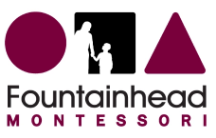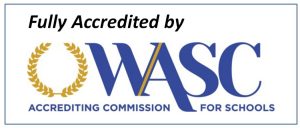As parents in Livermore begin searching for the best preschool experience for their children, they’re often faced with an important decision: Montessori vs. traditional preschool. While both options aim to support early childhood development, the approach, philosophy, and day-to-day experience differ significantly. Understanding these differences can help parents make the best choice for their child’s personality, learning style, and long-term development.
At Fountainhead Montessori School in Livermore, we’re proud to offer a nurturing and academically enriching Montessori preschool program that supports the whole child—socially, emotionally, and cognitively. But what exactly sets the Montessori approach apart from traditional models? Let’s take a closer look.
1. Educational Philosophy
Montessori Preschool: The Montessori method, developed by Dr. Maria Montessori over 100 years ago, is centered around the belief that children are naturally curious, capable, and eager to learn. The role of the teacher is not to lead a class in lockstep but to guide each child individually according to their own pace and interests. Learning is student-led, hands-on, and deeply personalized.
Traditional Preschool: In a more conventional preschool setting, the curriculum is typically teacher-directed and based on a set schedule. All children in the class engage in the same activities at the same time. Lessons are often taught in large groups, with less flexibility to tailor learning to individual needs.
2. Classroom Environment
Montessori Preschool: Walk into a Montessori classroom at Fountainhead Montessori School, and you’ll see a calm, organized space filled with child-sized furniture and inviting learning materials. Everything is arranged at the child’s level and designed to encourage exploration. The environment is intentionally peaceful to promote focus and concentration.
Traditional Preschool: Traditional classrooms tend to be more colorful, decorated with posters, crafts, and teacher-created displays. Materials may be less structured, and play is often centered around toys rather than purposeful learning tools.
3. Role of the Teacher
Montessori Preschool: Teachers act as guides or facilitators rather than lecturers. They observe each child closely, introduce new lessons when the child is ready, and step back to allow independent discovery. This encourages autonomy, confidence, and deep engagement in learning.
Traditional Preschool: Teachers take on a more central, authoritative role. They lead the group, give direct instruction, and manage the classroom through structured routines and planned activities.
4. Curriculum and Learning Style
Montessori Preschool: The Montessori curriculum is broad and integrated, covering practical life skills, sensory development, math, language, science, and cultural studies. Children choose their work and spend extended periods of time exploring topics that interest them. The use of hands-on, tactile materials helps solidify abstract concepts in a concrete way.
Traditional Preschool: Lessons often follow a standard curriculum focused on pre-academic skills like letter recognition, numbers, colors, and shapes. Learning is typically presented through songs, worksheets, and group activities, with shorter periods spent on any one task.
5. Independence and Responsibility
Montessori Preschool: Independence is a cornerstone of the Montessori method. Children are encouraged to care for themselves and their environment, whether it’s tying their own shoes, preparing a snack, or putting away their materials. They are taught to make choices and take responsibility for those choices in a safe, supportive environment.
Traditional Preschool: While traditional programs promote age-appropriate responsibility, the emphasis on group instruction means children often follow the teacher’s directions rather than initiate their own learning. There is less focus on independence and more on compliance.
6. Mixed-Age Classrooms
Montessori Preschool: Montessori classrooms are multi-age, typically including children ages 3 to 6. This setting mirrors real-life social structures and allows younger children to learn from older peers while older children gain confidence and leadership skills.
Traditional Preschool: Most traditional preschools group children by age. While this can help with uniform instruction, it limits opportunities for peer learning and mentoring.
7. Assessment and Progress
Montessori Preschool: Instead of tests or grades, Montessori teachers use observation and detailed records to assess a child’s progress. They evaluate how well a child has mastered a concept through their work and behavior, not standardized measures.
Traditional Preschool: Many traditional schools use checklists, testing, and formal assessments to track developmental milestones and academic progress.
Choosing What’s Right for Your Child
Both Montessori and traditional preschool models have strengths, but the Montessori approach offers a unique, child-centered alternative that nurtures independence, curiosity, and a lifelong love of learning. At Fountainhead Montessori School in Livermore, we invite parents to observe firsthand how our classrooms support the whole child in a calm, purposeful environment.
Our Montessori preschool program is carefully designed to meet children where they are, empowering them to grow academically, emotionally, and socially at their own pace. If you’re seeking a preschool that will help your child build confidence, foster independence, and embrace the joy of learning, Montessori may be the ideal choice.












Let us know what you think about this post
Put your Comment Below: